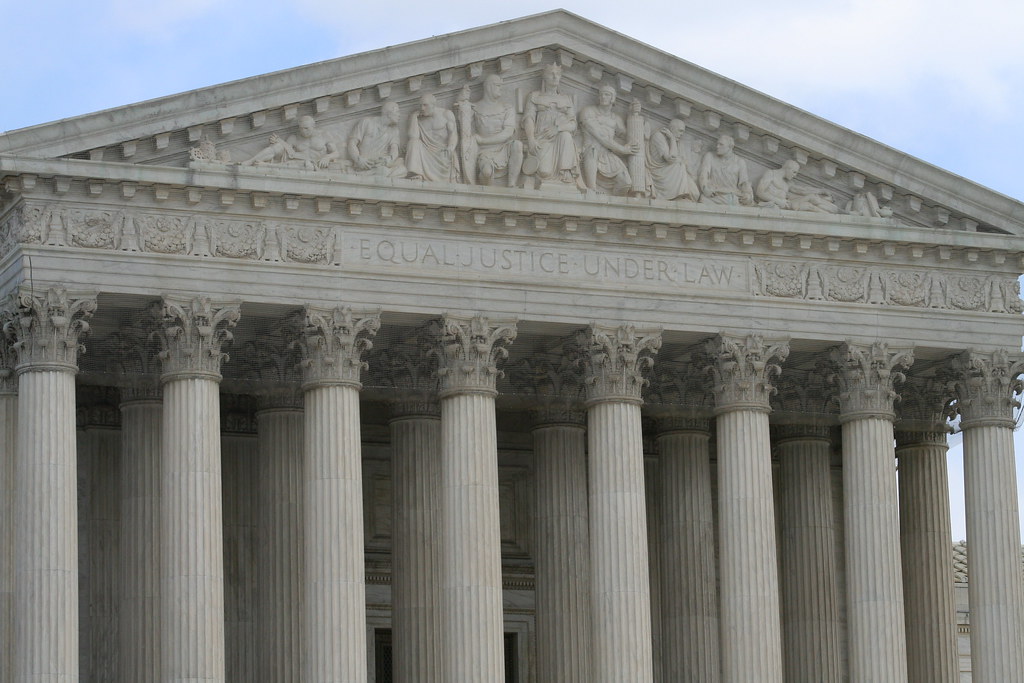Key Takeaways
- The Supreme Court lifted a ban on detaining people based solely on race, language, location, or job.
- ICE can resume racially based immigration raids under Operation At Large.
- The decision came through the shadow docket with no full explanation.
- A strong dissent warned this move breaks the Fourth Amendment.
- Latino communities now live with fear, and civil rights groups plan to fight back.
Supreme Court Greenlights Racial Profiling in LA
On September 8, the Supreme Court allowed the Trump administration to resume racial profiling in Los Angeles immigration raids. This ruling overturned a lower court’s ban on detaining people based only on their ethnicity, language, neighborhood, or type of work. As a result, ICE agents can again stop and arrest Latinos who look undocumented.
Why This Racial Profiling Ruling Matters
This case, Noem v. Perdomo, went through the court’s shadow docket. That means justices decided it quickly, without full briefs or oral arguments. They gave no detailed reasons. Yet the single-paragraph order speaks volumes. If you are Latino, you must carry solid ID at all times—or risk being picked up on the street or at work.
How Operation At Large Fuels Racial Profiling
In June, ICE launched Operation At Large in Los Angeles. Agents in masks and bulletproof vests roamed neighborhoods and job sites like construction zones and car washes. They stopped workers who spoke with an accent or looked Latino. Over 5,000 arrests followed. Critics say these raids often turned violent, with agents tackling people and using tear gas.
Inside the Shadow Docket and Emergency Orders
The shadow docket is a fast lane for urgent appeals. It lets the Court act without the usual delays. Presidents from George W. Bush to Joe Biden used it, but Trump used it most. In its 2024–25 term, the Court decided over 100 shadow docket cases. Many backed Trump’s toughest policies, from deportations to barring transgender troops.
Justices Clash: Kavanaugh vs. Sotomayor on Racial Profiling
Only Justice Kavanaugh wrote a short opinion defending the order. He cited past cases that let agents briefly stop people when they have “reasonable suspicion” of illegal status. He pointed to estimates of millions of undocumented immigrants in Los Angeles. Then he declared it “common sense” to stop Latinos whose jobs or language match suspicious profiles.
By contrast, Justice Sotomayor’s dissent slammed this logic. She argued the Fourth Amendment bans stopping people based on broad traits. She quoted the lower court’s evidence of agents “jumping out of cars,” tackling day laborers at Home Depot, and tear-gassing crowds. These actions created panic and fear. Sotomayor warned that detaining people by appearance alone is arbitrary and unconstitutional.
Real-World Impact of Racial Profiling in LA
Local communities already suffer. Workers who build homes, landscape yards, or wash cars now dread every trip outside. Parents fear raids at school drop-off points. Shop owners worry that simply speaking Spanish could trigger an ICE stop. Civil rights groups say victims include U.S. citizens and long-time residents. They plan new lawsuits and protests to halt these raids.
What Comes Next After the Profiling Ruling
Technically, this order is only “interim.” The Perdomo case will return to lower courts for a full hearing. Yet until the Supreme Court reconsiders it, ICE can expand similar raids in Chicago, Baltimore, and Washington, D.C. No city remains a safe zone. Immigration advocates urge people to know their rights, carry local ID if possible, and record any encounter with agents.
Conclusion
With this decision, the Supreme Court opened the door to unchecked racial profiling. It lets ICE treat Latinos as guilty until proven innocent. While a narrow dissent warned of this danger, the majority left communities in limbo. Now, civil rights groups and local leaders must step up to defend constitutional protections and keep families safe.
Frequently Asked Questions
What is racial profiling in immigration raids?
Racial profiling means stopping and questioning people based on their race, language, or appearance alone, rather than any specific evidence of wrongdoing. In immigration raids, it targets Latinos or Spanish speakers simply because they look or sound undocumented.
Why did the Supreme Court use the shadow docket?
The shadow docket lets the Court act quickly on emergency requests. It skips full legal briefs and oral arguments. Presidents often use it for urgent matters like execution stays or last-minute policy fights.
Can this decision be reversed?
Yes. The Perdomo case will go back to lower courts for a full hearing. Eventually, the Supreme Court could hear it again on the regular docket and issue a detailed ruling. Until then, ICE can proceed with profiling.
How can people protect themselves during raids?
Stay calm and respectful. Ask if you are free to go. If you are not under arrest, you can leave. If detained, you have the right to remain silent and ask for a lawyer. Record the encounter if you can and share it with an advocate or attorney.

